Three AHL forward prospect targets from Toronto in Tanev Trade

6 years ago
The calls for the Vancouver Canucks to trade Chris Tanev have been deafening, with many weighing in on why they should move on from the 27-year-old defenceman. The trade-Tanev Train has left the station. Whether you agree with the notion or not, this grants us the opportunity to look at players the Canucks could get in return for their ace defenceman.
The Toronto Maple Leafs are one team that make sense as a trade partner in this hypothetical deal. They’re on an upward trajectory and adding a right-handed minute eater like Tanev is their top priority.
TSN’s Scott Cullen proposed a deal on TSN.ca that had the Canucks receiving Brendan Leipsic, Connor Carrick and Toronto’s 2017 first-round pick. The community met Cullen’s proposal with contempt, and copious amounts of discussion ensued. It’s the summer; discussion is all we have.
I won’t be exploring a specific package that the Maple Leafs could pry Tanev with, but instead, aim to focus on forward prospects who might sway the Canucks. These players shouldn’t be the only piece(s) coming to the Canucks, but we can handicap their production and underlying metrics all the same.
We’ll start with the player included in the Cullen proposal: Brendan Leipsic
Brendan Leipsic
Leipsic is a 5’10” winger who’s played six NHL games so far in his career, where he scored one goal and two assists — his goal was against Vancouver.
The Nashville Predators originally drafted the little spark plug. Nashville dealt Leipsic to the Maple Leafs before the 2015 trade deadline, though. Since then, Leipsic’s hovered around a point per game pace as a member of their farm team, the Toronto Marlies.
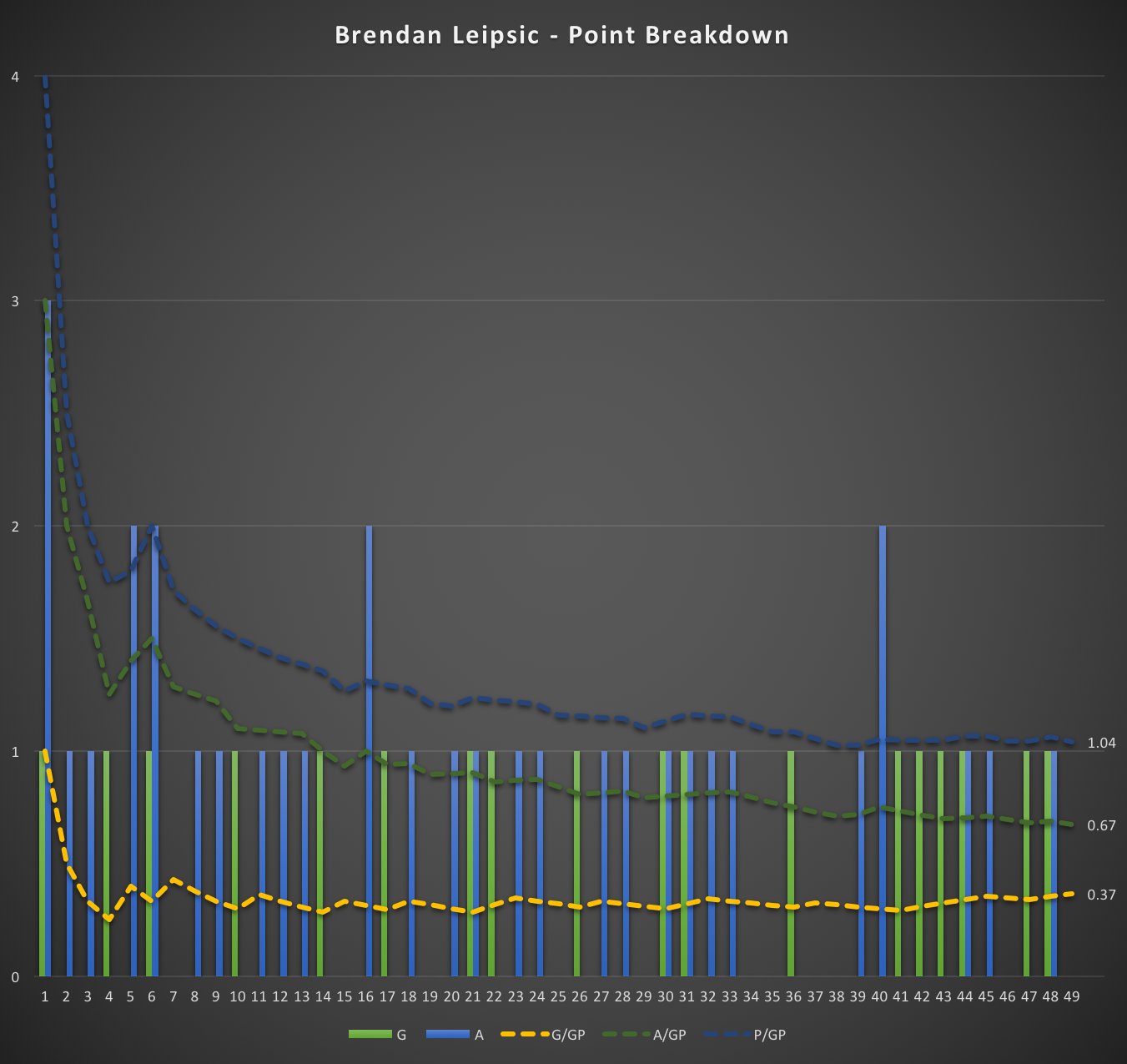
This season he has suffered some injuries but was the only Marlie to be over a PPG. His situational point production can be found below:
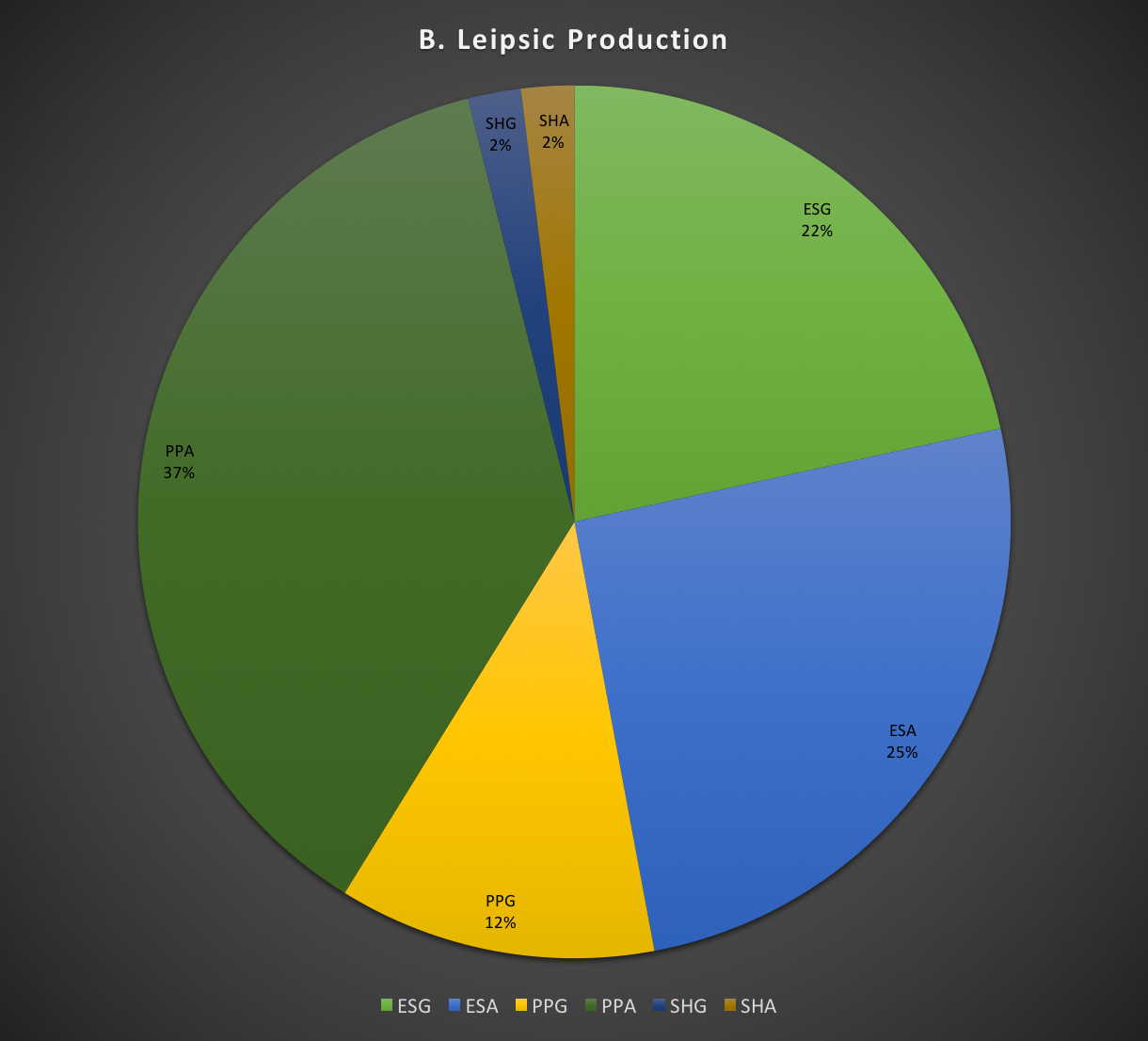
| B. Leipsic | |
| ESG | 11 |
| ESA | 13 |
| PPG | 6 |
| PPA | 19 |
| SHG | 1 |
| SHA | 1 |
People have argued that power play goals are more volatile and suspect to their environment than power play assists. Assists with the man advantage are, generally, more sustainable. So even though about 49% of Leipsic’s production was with the man advantage, the fact that 37% of his points are power play assists should alleviate those concerns.
Historically, Leipsic was the Portland Winterhawks’ leading scorer when Travis Green was calling the shots as their head coach. In 2012-13, Leipsic led Portland with 120 points (49 goals and 71 assists) in 68 games.
Leipsic is a tenacious forward with good playmaking skills and speed. He loves getting under the skin of his opponents. He has an underrated shot that he uses well, plays with pace and is crafty offensively.
The left winger ended the season with 146 shots on goal, averaging 2.98 shots per game. He had shots in 48 of 49 games. The only contest where he didn’t register a shot was October 23rd vs. Manitoba.

Using the pGPS lens, 35.8% of comparable players went on to become NHL regulars. There are some intriguing names in there with Tyler Johnson, Daniel Briere and Brendan Morrison on the younger side of comparables and slightly higher production-wise. If Leipsic didn’t have his injury issues this year, he could’ve seen a higher PPG rate, and look even better.
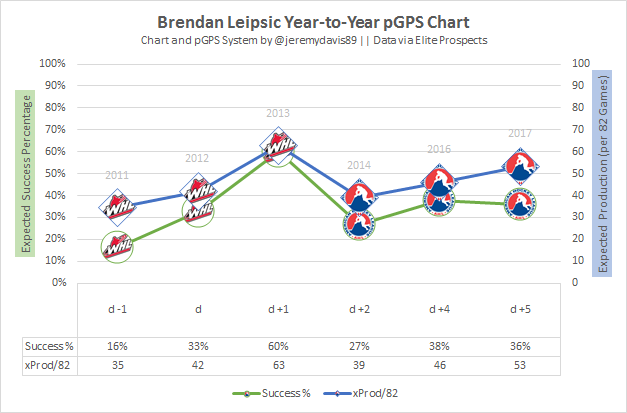
Leipsic has seen a little dip in pGPS this season but given his injuries, that isn’t surprising.
With Leipsic, there are some curve balls. He is concluding his entry level deal this season, would have to be protected from the expansion draft and is waiver eligible next season. Operating under the assumption that this Tanev trade happens after the expansion draft, and Leipsic isn’t selected by the Vegas Golden Knights, waivers make things complicated. If the Canucks do acquire the Winnipeg native, he would need to stay on the Canucks roster, or they risk losing him for nothing.
He is at a point where he needs a chance at the NHL level to see if he can carve out his niche. The Leafs will either have to give him that spot or move him to a team who is willing.
Kasperi Kapanen
Kasperi Kapanen is the jewel of many a Canucks fans eye. If you want the Canucks to ensure they get the most impactful forward prospect, then Kapanen is the best bet. Originally drafted by the Pittsburgh Penguins, they dealt Kapanen to the Leafs in the Phil Kessel trade. He’s the youngest of the three Leafs prospects I’m profiling, only turning 21 this summer.
He is the flash and dash of this group. Kapanen isn’t a dime a dozen type of player and is arguably the Leafs best forward prospect (who hasn’t graduated):
Kapanen holds the most value for the Leafs if they’re looking to upgrade their roster, but he has the potential to add good offensive depth to their group as is. Basically, they’ve reason to trade him or keep him.
Kapanen is coming off his second season in the AHL. He was more of a secondary piece for the Marlies last season, but this year he led them offensively.
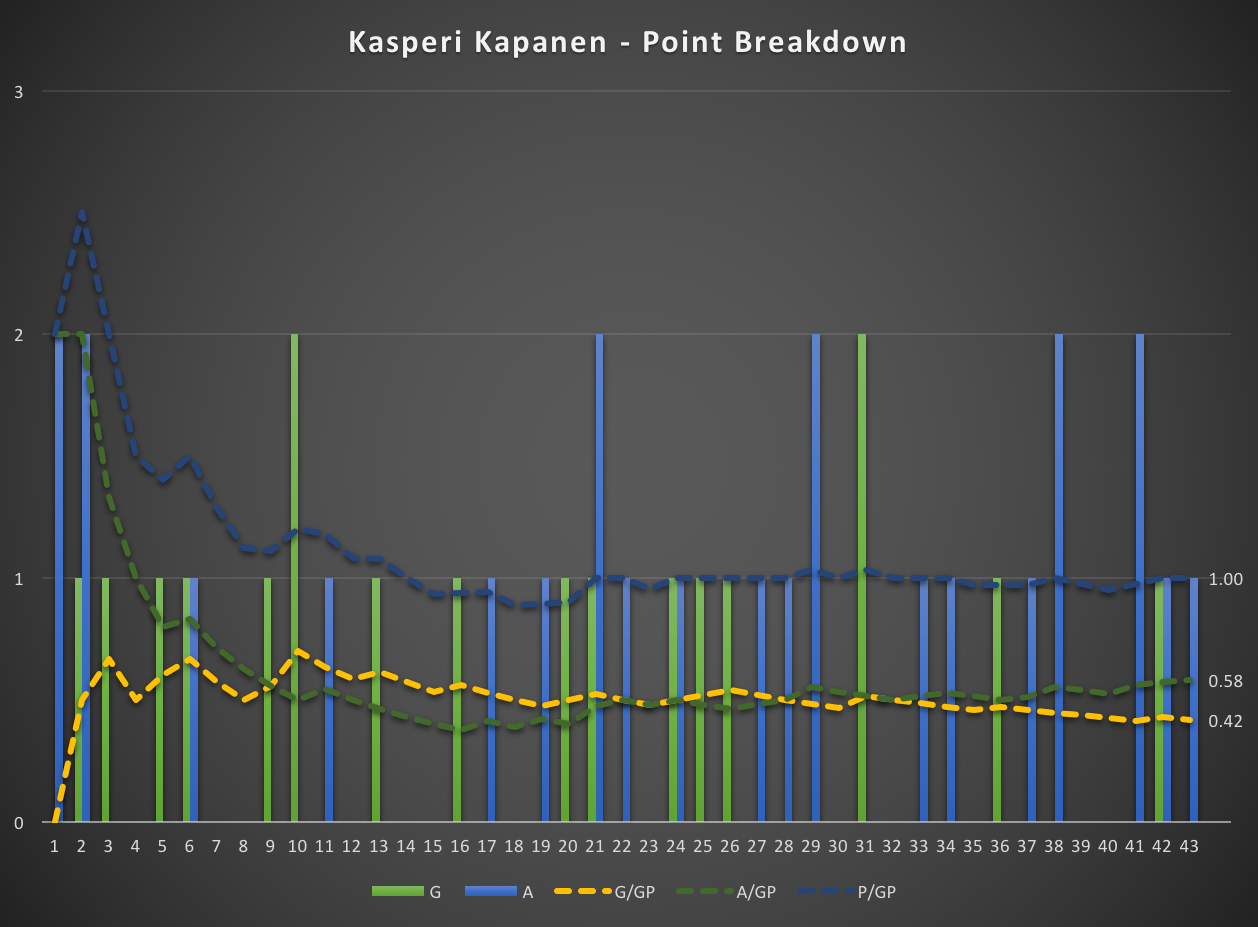
Kapanen was subject to some bursts of offence and then had some slow stretches, but overall similar production to Leipsic.

| K.Kapanen | |
| ESG | 9 |
| ESA | 11 |
| PPG | 9 |
| PPA | 14 |
| SHG | 0 |
| SHA | 0 |
With Kapanen, 53% of his production came on the power play with 23 of his 43 total points coming with the man advantage. Kapanen does have a much higher percentage of power-play goals, which is something to use video to evaluate further.
Like Leipsic, Kapanen shoots a lot. In his 43 games this season, he only had one game where he didn’t register a shot on goal. That was on October 28th vs. Albany. He ended the season with a SOG/GP average of 2.81.
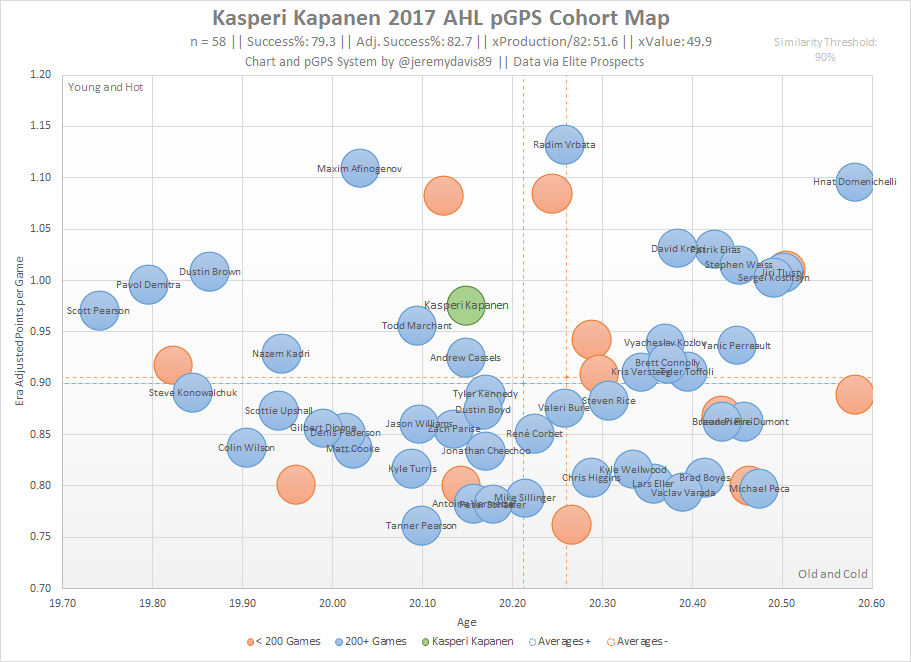
To no one’s surprise, Kapanen’s pGPS % is extremely favourable with 79.3% of comparable players go on to become NHL regulars. There is a wide variety of players there but encouraging to see some notable producers in the NHL all around, and even below-concerning production.
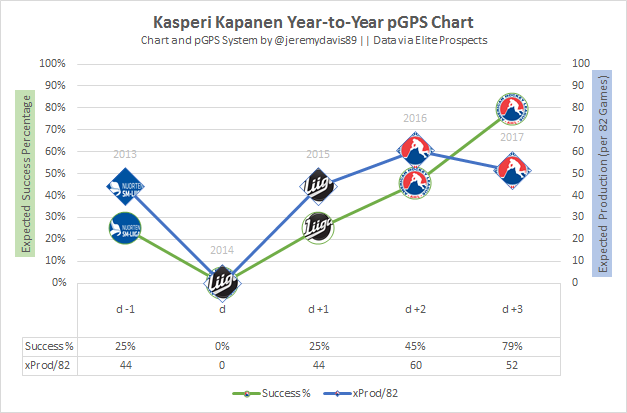
Kapanen has trended upwards since being drafted in 2014 and really broke out this season which the high pGPS percentage reinforces.
Since Kapanen signed his ELC with the Penguins shortly after being drafted and he’s considered ’18 years old’ according to article 9.2. of the NHL/NHLPA CBA. Since that was done, Kapanen’s contract slid in 2014-15, and then slid again for the 2015-16 season because he did not appear in more than nine games in the NHL. (For a more in-depth explanation on this, I covered it here in relation to Nikolay Goldobin)
This means that Kapanen has two years remaining with a cap hit of $863,333. He is eligible for waivers if he appears in 137 more NHL games or at the beginning of the 2019-2020 season.
Andreas Johnsson
The least recognizable name of the three is Swedish winger Andreas Johnsson. The former seventh-round pick just finished his first full season in North America after tearing up the SHL. The 5’10” and 184 lbs left winger is a skilled player who has a balanced offensive attack that would likely succeed in the NHL. He isn’t a fast skater but has quickness and power to his stride.
He’s always been one of those players that you look at and think “how did he fall to the seventh-round?”. He was worth a flyer in any of fourth, fifth, sixth or seventh-round, but the Leafs were able to snag him with the 202nd overall pick in the 2013 NHL Entry Draft.
He was the least productive of the three players here, but his last two-thirds of the season were extremely encouraging.
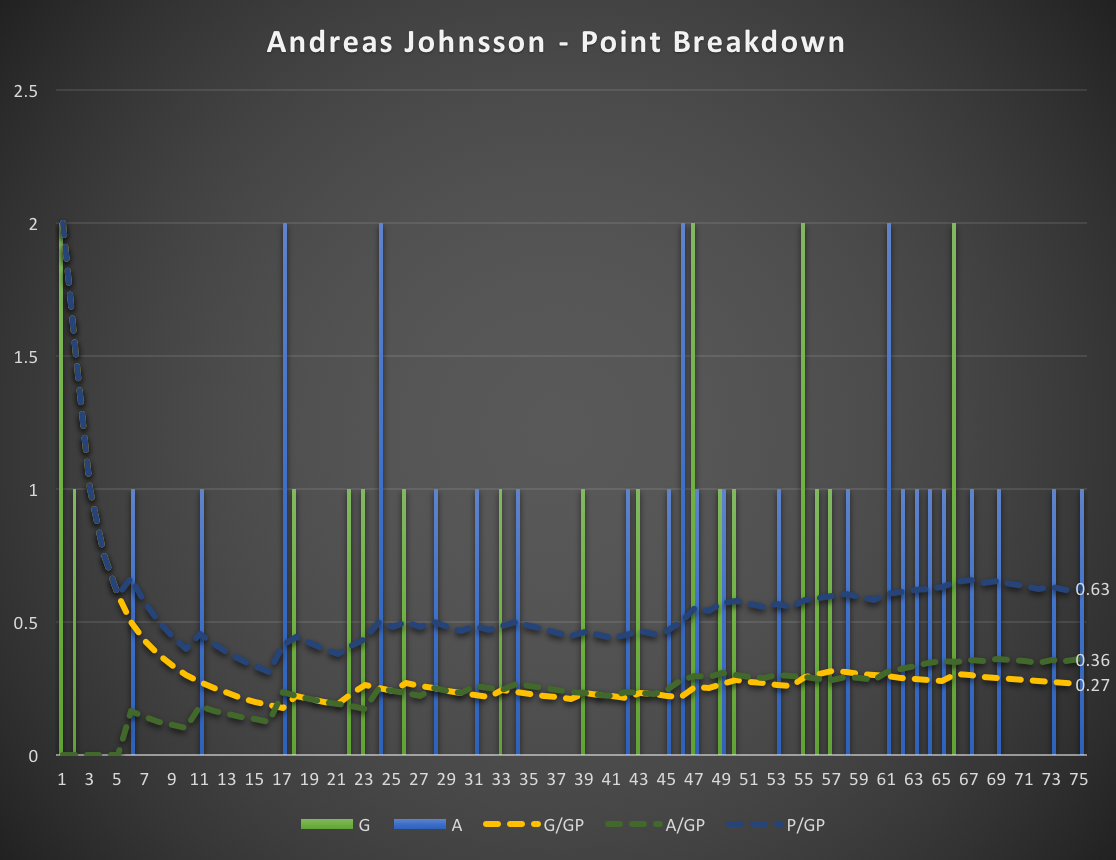
At the 44 game mark for Johnsson, he only had 20 points; he then had 27 points in the final 31 games to push his PPG rate up to .63. You can see a noticeable push from his assists. That was a combination of recalls, injuries to other players, and Johnsson adapting to the N.A. rink. He has been efficient and noticeable in the playoffs for the Marlies this year.

| A. Johnsson | |
| ESG | 10 |
| ESA | 17 |
| PPG | 10 |
| PPA | 9 |
| SHG | 0 |
| SHA | 1 |
Like Kapanen, we see very high production on the power-play for Johnsson, this is something that would not be further evaluated and dissected through video. Trying to figure how/what resulted in the goal.
Johnsson’s shot production was much lower with an average of 1.84 SOG/PG. This resulted in inflated SH% of 15.1%

Johnsson has the most comparable players out of there with 167 matches. The 28.1% success rate is a little lower, but with the context of the first year in North America and a strong second half, the argument can easily be made that the percentage isn’t a full representation of his trajectory. The names like Matt Calvert, Jesper Fast, and Calle Jarnkrok (reasonably close to him in the plot chart) are what I would’ve personally expected as comparable roles to Johnsson.

Obviously Johnsson has seen some drastic dip in his pGPS – but given the context of first year in North America and a slower start to the year, the number isn’t alarming. If he can have a good start to his season next year, he can eliminate any concern the drop in percentage has.
Johnsson just completed the second year of his three-year entry-level contract. He has one year remaining with a cap hit of $750,833. He becomes eligible for waivers at the beginning of the 2018-19 season.
His production doesn’t stand out as much, but if he were a Utica Comet, he would’ve finished first in points amongst players that the Canucks have signed and tied for first with Darren Archibald (who is on an AHL deal).
Comparisons
Lastly, we look at how they compare to each other.
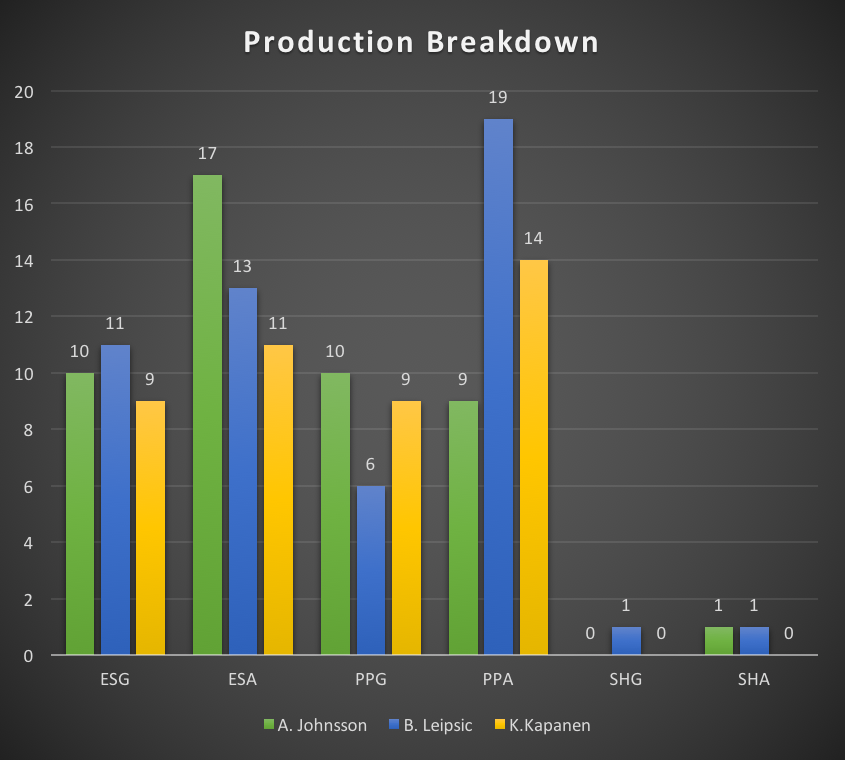
Since I focused a lot on Johnsson and Kapanen’s power-play production, it’s important to check them against each other. Despite his lower production rates, Johnsson led the entire group in ESA and is in the mix for ESG.
For the AHL, ice time is not publicly available. So we can only go off the estimates that are available. Which is as follows:
| Position | EST TOI | |
| A. Johnsson | F | 17:10 |
| B. Leipsic | F | 22.23 |
| K. Kapanen | F | 21.54 |
Unfortunately, we are limited in situational breakdowns and it only being estimated. With that disclaimer out of the way, here is how they compare:

Ideally, we would be able to break apart into PP, SH and even strength but this look does provide a good outlook for all three players. The chart is for goals, primary assists and points.
From a Goals For %, Relative Goals For % and Wins Above Replacement lens – all three look good:
| GF% | REL GF% | WAR | |
| A. Johnsson | 58% | 6.2% | 2.53 |
| B. Leipsic | 57% | 4.3% | 1.87 |
| K. Kapanen | 60% | 6.8% | 1.86 |
Conclusion
It’s clear that Kapanen is still the most attractive prospect that could be moved as he holds the most cache as a former first round pick. Leipsic provides an intriguing skillset because he is a very skilled offensive player but plays with an edge and can get under people’s skin. He can be one of those players that can play anywhere in your lineup.
Johnsson is, of course, the least recognizable name, but his underlying numbers and production are encouraging. He wasn’t leaned on as much as the other two, but when out there, he has produced. There are some red flags there with the powerplay production and the second half explosion.
Kapanen is the logical target for a deal (along with a first-round pick), but if the Canucks can use their advantageous position to get multiple players, then Leipsic and Johnsson are good targets. They are not the players that the package should be built around but would be worthwhile adds to the organization (along with Kapanen and pick).
Maybe the Canucks can dump a bad prospect contract along the way too.
Underlying data is from ahlstats.blogspot.ca
pGPS data provided by Canucks Army writer Jeremy Davis
Remainder of data is from www.theahl.com





